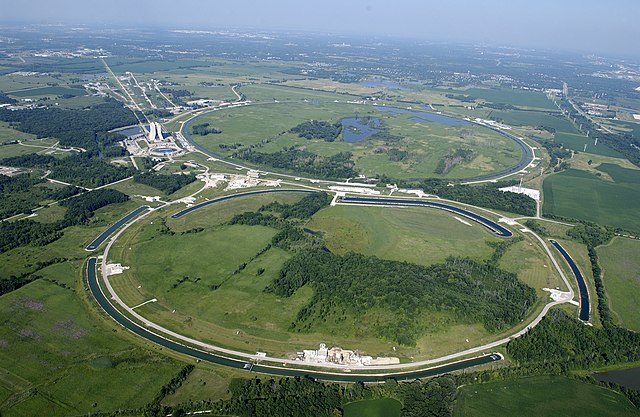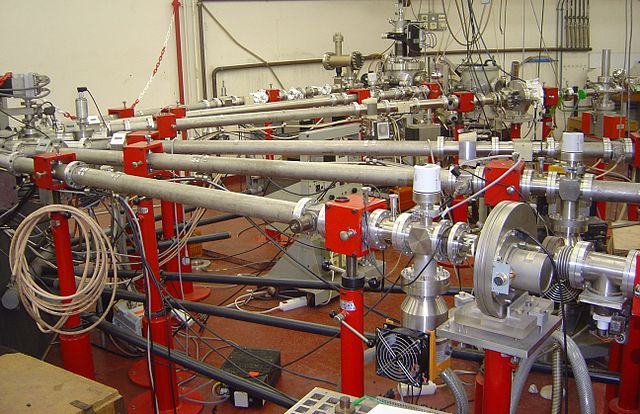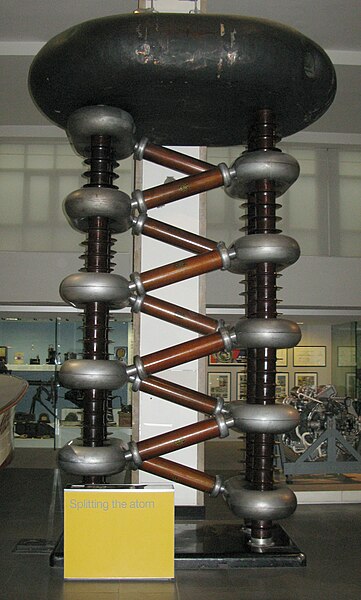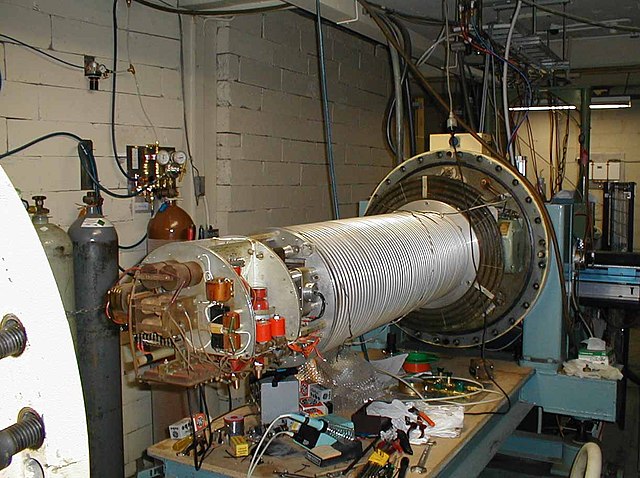The Bevatron was a particle accelerator — specifically, a weak-focusing proton synchrotron — at Lawrence Berkeley National Laboratory, U.S., which began operating in 1954. The antiproton was discovered there in 1955, resulting in the 1959 Nobel Prize in physics for Emilio Segrè and Owen Chamberlain. It accelerated protons into a fixed target, and was named for its ability to impart energies of billions of eV.
Donald Cooksey, Harold Fidler, Ernest Lawrence, William Brobeck, and Robert Thornton overlooking model of Bevatron, 1950
First tracks observed in liquid hydrogen bubble chamber at the Bevatron
BEV-938. Antiproton set-up with work group: Emilio Segre, Clyde Wiegand, Edward J. Lofgren, Owen Chamberlain, Thomas Ypsilantis, 1955
A particle accelerator is a machine that uses electromagnetic fields to propel charged particles to very high speeds and energies, and to contain them in well-defined beams.
The Tevatron (background circle), a synchrotron collider type particle accelerator at Fermi National Accelerator Laboratory (Fermilab), Batavia, Illinois, USA. Shut down in 2011, until 2007 it was the most powerful particle accelerator in the world, accelerating protons to an energy of over 1 TeV (tera electron volts). Beams of protons and antiprotons, circulating in opposite directions in the rear ring, collided at two magnetically induced intersection points.
Beamlines leading from the Van de Graaff accelerator to various experiments, in the basement of the Jussieu Campus in Paris.
A Cockcroft–Walton generator (Philips, 1937), residing in Science Museum (London).
A 1960s single stage 2 MeV linear Van de Graaff accelerator, here opened for maintenance







